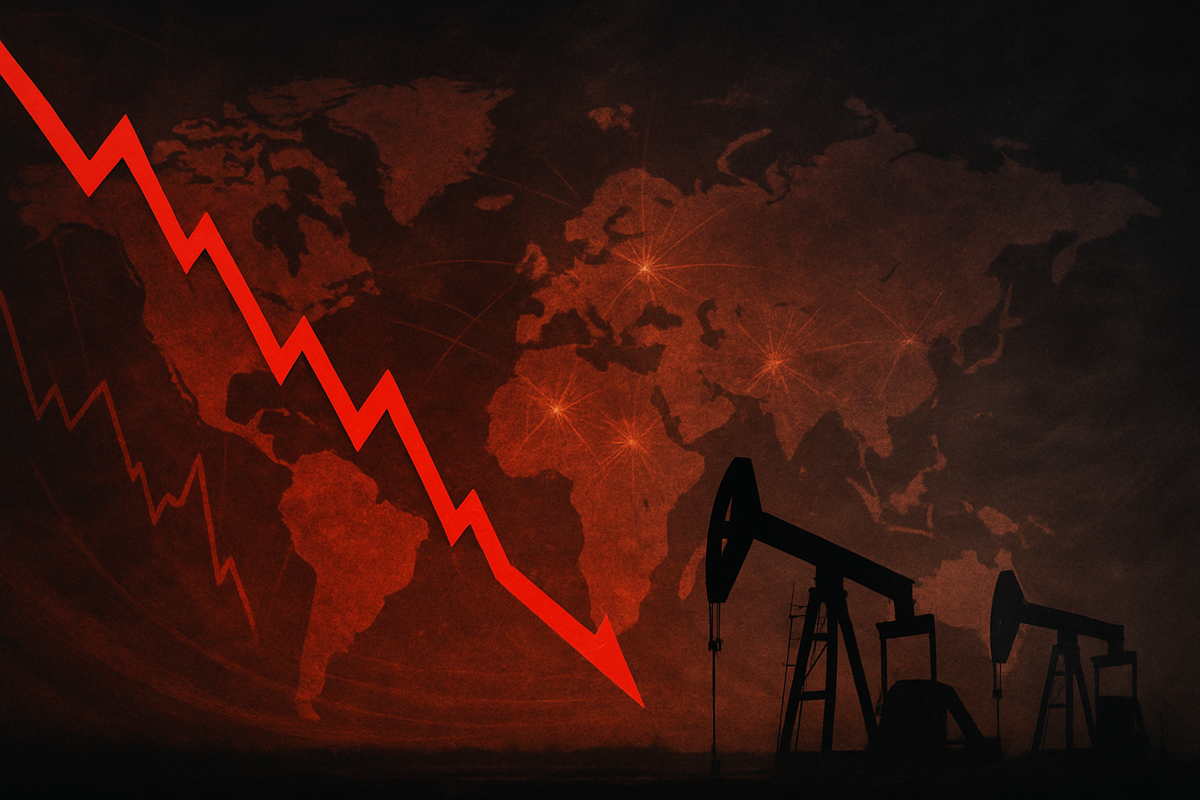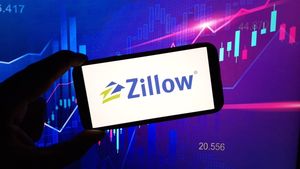
Jamie Dimon, the influential CEO of JPMorgan Chase (NYSE: JPM), has issued a series of urgent warnings, painting a stark picture of significant market risks looming in the next few years. His primary concern centers on escalating geopolitical tensions, which he believes are not adequately priced into current market valuations. Dimon's pronouncements, reiterated as recently as October 9, 2025, highlight a treacherous global landscape that could trigger a major stock market correction and unleash unprecedented volatility in oil and other key commodities.
The veteran banker's admonitions underscore a growing apprehension among financial leaders about the profound economic consequences of global instability. Dimon asserts that the ongoing conflicts in Ukraine and the Middle East, coupled with a broader trend of global remilitarization and trade restructuring, are creating an inflationary environment that could shock complacent markets. Investors are urged to brace for potential disruptions, as these geopolitical forces threaten to upend supply chains, drive up commodity prices, and fundamentally alter the global economic order.
Unpacking the Treacherous Landscape: Dimon's Geopolitical Concerns
Jamie Dimon's warnings are not new, but their increasing urgency reflects a deepening concern over the trajectory of global affairs. Over the past year, Dimon has consistently highlighted geopolitical risks as the most significant threat to global financial markets, often overshadowing traditional economic debates. His pronouncements have included a notable statement during JPMorgan's third-quarter earnings report on October 11, 2024, where he declared, "conditions are treacherous and getting worse." More recently, in May 2025, he continued to emphasize that markets are failing to price in the risks from geopolitics, burgeoning deficits, and persistent inflationary pressures. His latest reiteration on October 9, 2025, specifically warned of a potential major correction in U.S. stocks within the next six months to two years, attributing this risk primarily to geopolitical tensions, heavy fiscal spending, and global remilitarization.
Dimon's concerns are deeply rooted in the inflationary attributes of current geopolitical issues. He points to the widespread remilitarization of the world and the ongoing restructuring of global trade as direct contributors to rising inflation. Trade wars, in particular, are seen as inflationary forces that the market has yet to fully account for. He frequently invokes the 1974 oil crisis as a historical parallel, cautioning that geopolitical complexities can lead to "inflection points" that conventional economic models often fail to predict. This historical context underscores his fear of similar, unpredictable shocks to the energy markets.
Key players involved in these geopolitical tensions include major global powers whose actions and rivalries directly influence international trade, energy supplies, and diplomatic stability. The conflicts in Ukraine and the Middle East are central to Dimon's analysis, as they directly impact energy production, shipping routes, and global alliances. Initial market reactions to such warnings have often been muted, reflecting the "complacency" Dimon frequently criticizes. However, the persistent nature of his warnings, combined with escalating real-world events, is beginning to prompt a more cautious stance among some institutional investors, leading to a re-evaluation of risk exposure. JPMorgan Chase itself has established a "Center for Geopolitics" to better analyze these global risks and guide its clients through the evolving landscape.
Market Winners and Losers: The Commodity Conundrum
Jamie Dimon's dire warnings about geopolitical tensions and their impact on commodities suggest a significant reshuffling of fortunes across various sectors. Companies deeply entrenched in the oil and gas industry, particularly those with diversified global operations and robust supply chain management, could see both challenges and opportunities. On one hand, heightened geopolitical risks could disrupt supply, leading to price spikes that benefit producers. Integrated oil majors like ExxonMobil (NYSE: XOM) and Chevron (NYSE: CVX), with their extensive exploration, production, refining, and distribution networks, might be better positioned to navigate supply chain disruptions and capitalize on higher prices. However, they also face increased operational risks in volatile regions and potential pressure from governments to stabilize prices.
Conversely, industries heavily reliant on stable and affordable energy inputs stand to lose significantly. Airlines such as Delta Air Lines (NASDAQ: DAL) and United Airlines (NASDAQ: UAL), shipping companies like Maersk (CPH: MAERSK-B), and manufacturing firms with high energy consumption could face substantially increased operating costs, eroding profit margins. Consumers, too, would bear the brunt of higher energy prices through increased fuel costs and inflationary pressures on goods and services. Companies involved in renewable energy and energy efficiency solutions, such as NextEra Energy (NYSE: NEE) or Enphase Energy (NASDAQ: ENPH), might see increased investment as nations seek to reduce reliance on volatile fossil fuel markets, positioning them as potential long-term winners.
Beyond oil, other key commodities are also at risk. Agricultural commodities like wheat and corn, often affected by geopolitical conflicts in major producing regions, could experience price volatility, impacting global food security and the profitability of agribusinesses like Archer-Daniels-Midland (NYSE: ADM) and Bunge Global SA (NYSE: BG). Industrial metals, crucial for manufacturing and defense, could also see price surges due to supply disruptions or increased demand from global remilitarization. Mining companies like Rio Tinto (ASX: RIO) and BHP Group (ASX: BHP) might benefit from higher prices, while industries dependent on these inputs, such as automotive and electronics, could face supply constraints and increased costs. The broader impact will be felt by companies across the spectrum, necessitating agile strategies to manage supply chain risks and adapt to a potentially more expensive and unpredictable commodity landscape.
Wider Significance: A New Era of Economic Volatility
Jamie Dimon's warnings transcend immediate market fluctuations, signaling a potentially profound shift in the global economic paradigm. The confluence of geopolitical tensions, global remilitarization, and trade restructuring fits into a broader trend of deglobalization and the fragmentation of international economic cooperation. This era contrasts sharply with the relatively stable and interconnected global economy of the past few decades, where just-in-time supply chains and efficient resource allocation were paramount. The current environment suggests a move towards more resilient, albeit less efficient, regional supply chains and a greater emphasis on national security over pure economic optimization.
The potential ripple effects on competitors and partners are immense. Companies that have built their business models on seamless global trade and predictable energy costs will face significant challenges. Smaller players, lacking the financial buffers or diversified operations of larger corporations, may struggle to adapt to sudden price spikes or supply disruptions. International partnerships could be strained as nations prioritize domestic interests and resource security. Regulatory and policy implications are also significant, with governments potentially intervening more actively in commodity markets, imposing trade restrictions, or investing heavily in domestic energy production and strategic reserves. These interventions, while aimed at stability, could further distort market dynamics.
Historically, periods of heightened geopolitical tension, such as the Cold War or the 1970s oil crises, have demonstrated how political events can fundamentally reshape economic structures. The 1974 oil crisis, which Dimon frequently references, led to stagflation, a reorientation of energy policies, and a significant shift in global economic power. While the specific dynamics of today are different, the underlying principle remains: geopolitical instability can trigger "inflection points" that challenge prevailing economic assumptions. The current situation could usher in an era where inflation is more persistent, economic growth is more volatile, and the risk premium for investing in certain regions or commodities increases substantially. This broader significance underscores the need for businesses and policymakers alike to prepare for a fundamentally different operating environment.
What Comes Next: Navigating the Uncharted Waters
The immediate future, as per Jamie Dimon's warnings, suggests a period of heightened vigilance and potential market turbulence. In the short term, investors should anticipate continued volatility in commodity markets, particularly oil, as geopolitical events unfold. Any escalation of existing conflicts or emergence of new flashpoints could lead to sharp price movements, impacting inflation and consumer spending. Companies will likely focus on shoring up supply chains, diversifying sourcing, and exploring hedging strategies to mitigate commodity price risks. Central banks, already grappling with inflation, might face renewed pressure to maintain tighter monetary policies, potentially dampening economic growth.
Looking further ahead, the long-term possibilities point towards a more fragmented and regionalized global economy. Nations may prioritize energy independence and strategic commodity reserves, leading to increased investment in domestic production and alternative energy sources. This could create significant market opportunities for companies involved in renewable energy, battery storage, and advanced manufacturing. However, it also presents challenges for companies that thrive on globalized trade and efficient cross-border supply chains, necessitating strategic pivots towards localized production or new market entry strategies. Potential scenarios range from a managed de-escalation of tensions, leading to a gradual stabilization of markets, to a more severe escalation that triggers a prolonged period of high inflation, economic stagnation, and increased geopolitical rivalry. The latter scenario would demand radical adaptations from businesses and investors, potentially favoring defensive assets and sectors less exposed to global supply shocks.
Market opportunities may emerge in sectors that benefit from increased defense spending, critical infrastructure development, and the pursuit of energy security. Conversely, challenges will persist for export-oriented industries, companies with extensive international supply chains, and those operating in politically sensitive regions. Strategic adaptations will be crucial, including a greater emphasis on risk management, scenario planning, and building resilient business models. Investors should consider rebalancing portfolios to account for increased geopolitical risk, potentially favoring companies with strong balance sheets, stable cash flows, and exposure to essential goods and services that are less susceptible to global shocks.
Comprehensive Wrap-up: Preparing for a Reshaped Market
Jamie Dimon's consistent and increasingly urgent warnings serve as a critical wake-up call for global financial markets. The key takeaway is that geopolitical tensions are not merely external factors but are now central drivers of economic risk, particularly impacting inflation and commodity markets. The market's current "complacency," as Dimon describes it, suggests an underestimation of these profound shifts. Moving forward, the financial landscape will likely be characterized by greater volatility, persistent inflationary pressures stemming from remilitarization and trade restructuring, and a potential for significant stock market corrections.
The assessment of the market moving forward points to a necessity for investors to re-evaluate traditional risk models and investment strategies. The era of predictable, low-inflationary growth fueled by seamless globalization may be drawing to a close. Instead, we are entering a period where resilience, adaptability, and a deep understanding of geopolitical dynamics will be paramount. Companies that can effectively manage supply chain risks, innovate in energy efficiency, and navigate complex international relations will be best positioned to thrive.
Final thoughts on the significance and lasting impact suggest that Dimon's warnings are not just about short-term fluctuations but about a fundamental reshaping of the global economic order. The lasting impact could include a more regionalized global economy, increased government intervention in strategic sectors, and a heightened focus on national security in economic policy. Investors should closely watch for further escalations in geopolitical conflicts, shifts in global trade policies, and central bank responses to persistent inflation. Diversification, a focus on intrinsic value, and a cautious approach to risk will be essential in the coming months and years as the market navigates these uncharted and treacherous waters.
This content is intended for informational purposes only and is not financial advice.





